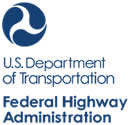U.S. Department of Transportation
Federal Highway Administration
1200 New Jersey Avenue, SE
Washington, DC 20590
202-366-4000
1200 New Jersey Avenue, SE
Washington, DC 20590

May 26, 2017
An open letter to all in the highway safety hardware and roadside design community:
The Federal Highway Administration (FHWA) is improving its process for issuing Federal-aid eligibility letters for roadside safety hardware systems. The FHWA's Federal-aid eligibility letters are provided as a service to the States and are not a requirement for roadside safety hardware to be eligible for Federal-aid reimbursement. This change focuses the FHWA on analyzing the materials submitted for review, rather than addressing the types of crash tests that should be submitted, as the latter are detennined by the American Association of State Highway and Transportation Officials (AASHTO) Manual for Assessing Roadside Safety Hardware (MASH).
This letter serves to notify you that FHWA is implementing immediate process changes as described in this letter.
Effective immediately, FHWA is implementing the following changes on how requests for Federal-aid eligibility letters for roadside safety hardware systems are accepted:
Manufacturers and States that received an eligibility letter under AASHTO 's MASH standards and did not run the full suite of tests will be required to run the remaining tests in order to retain the Federal-aid eligibility letter. The FHWA has contacted the affected manufacturers . These affected parties have up to one year, from the date of this letter, to run the balance of crash tests and -re-submit their request for an eligibility letter. A written request, including crash test results from an accredited laboratory, must be submitted to FHWA within one year.
The retroactive date of January 1, 2016, corresponds to the official implementation date balloted by AASHTO and the date FHWA began issuing Federal-aid eligibility letters using standards from AASHTO 's MASH only, i.e., when FHWA ceased issuing eligibility letters using National Cooperative Highway Research Program (NCHRP) Report 350 guidance.
FHWA will no longer provide Federal-aid eligibility letters for modifications made to an AASHTO MASH-crash tested device. Manufacturers who have submitted requests for eligibility letters based on modifications have been notified .
These changes are based on several important factors. The transition from guidance in the NCHRP Report 350 to standards in the AASHTO MASH continues per the FHWA– AASHTO Implementation Agreement balloted by AASHTO. Since its official launch, questions about the AASHTO MASH criteria have been identified by a range of stakeholders. Until such time these questions are answered and the transportation community has more experience with AASHTO MASH requirements, FHWA will require manufacturers and States to run all AASHTO MASH recommended crash tests in order to qualify for a FHWA Federal-aid eligibility letter.
This is a prudent action to support highway safety for the traveling public. This opportunity for improvement and consistency was noted in the Government Accountability Office's (GAO) final report dated June 2016, "Highway Safety: More Robust DOT Oversight of Guardrails and Other Roadside Hardware Could Further Enhance Safety, " GA0-16-575 and Evaluation of the Roadside Safety Hardware Process – Prepared for the FHWA's Office of Policy by the John A. Volpe National Transportation Systems Center.
The changes promote efficiency of Federal resources while advancing our Federal role to support public safety and ensuring that decision-making is at the State and local level.
The FHWA will address the initial "entry" of a device into the possibility for Federal-aid reimbursement , through examining crash testing, but the final decisions on selection and modifications to devices will be at the State and local level.
States and manufacturers will now have an outstanding opportunity to collaborate and deploy manufacturers' innovative modifications in a timely manner and/or respond to State-specific needs requiring significant and non-significant modifications - without the need of another Federal-aid eligibility letter from FHWA.
The change helps emphasize that understanding the performance of roadside safety hardware begins in a controlled , sterile laboratory environment using crash test scenarios and standards set and maintained via AASHTO's MASH . However, laboratory tests cannot account for all the variables and situations drivers may encounter. Therefore, FHWA continues to encourage States to perform in-service performance evaluations to identify real world performance of hardware so all stakeholders have a more comprehensive understanding of these devices' performance.
Thank you in advance for your cooperation in helping FHWA to implement these improvements to enhance the safety of roadside hardware. We will notify you of any future improvements to the eligibility letter process. For more information , please visit our website at
https://safety.fhwa.dot.gov/roadway_dept/countermeasures/reduce_crash_severity/elig_process.cfm.
If you have any questions or comments, please contact Brian Fouch at (202) 366-0744.
Sincerely yours,

Elizabeth Alicandri
Associate Administrator for Safety
